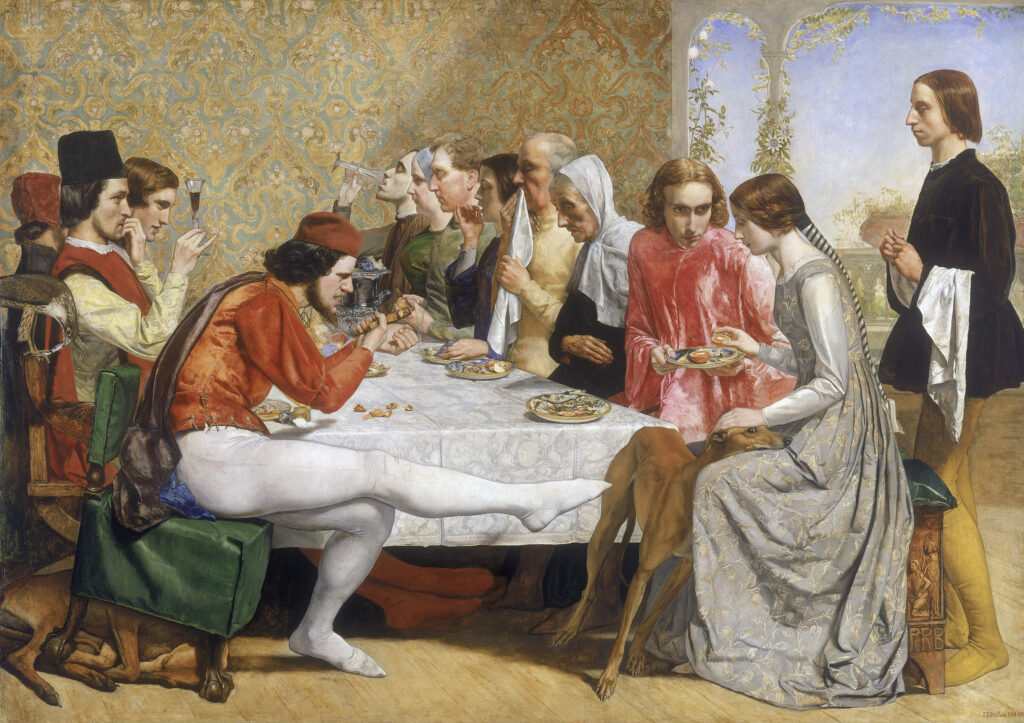
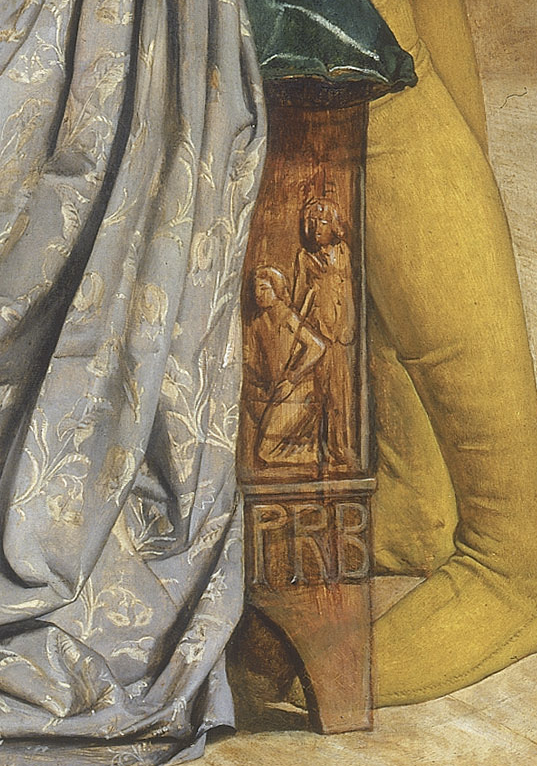
What does Pre-Raphaelite mean?
While it can seem to be an umbrella term, it actually refers to
- art created by members of the Pre-Raphaelite Brotherhood and their followers.
- the literature that grew out of the Pre-Raphaelite art movement.
Who were the Pre-Raphaelite Brotherhood?
The Pre-Raphaelite Brotherhood began in 1848 as a secret society of young artists:
- Dante Gabriel Rossetti
- William Michael Rossetti
- Thomas Woolner
- William Holman Hunt
- Frederic George Stephens
- James Collinson
- John Everett Millais.
On this website, I often include artists who were not members of the PRB but were either members of their circle or were adherents in style, principle, or subject matter. When writing about them, I often describe them as Pre-Raphaelite followers to differentiate from the Brotherhood proper.
The members of the Pre-Raphaelite Brotherhood were rebelling against the current art establishment, mainly the British Royal Academy, and its formulaic approach to art instruction. Though the Pre-Raphaelites’ goal was to remain secret, the meaning of the initials “PRB” inscribed on their paintings became public (possibly leaked by Dante Gabriel Rossetti).
In character and temperament, the members of the Brotherhood were vastly different. Millais, Rossetti, and Holman Hunt each had his own distinctive style, but one thing they all agreed on was their displeasure with the way artists were instructed at the Royal Academy. Training there was formulaic and dry, which led to generations of British art that the Pre-Raphaelites saw as dark and unimaginative. They longed to rebel against the first president of the RA, Sir Joshua Reynolds (they referred to him as Sir Sloshua).
These bright and talented idealists were radical for the time and their goals were sincere. They wanted to rejuvenate the art world, to remind the Royal Academy that paintings could be dazzling and colorful while still maintaining the dignity of accuracy.
How did they choose the name Pre-Raphaelite?
The brotherhood believed that for the art world to be revived, it needed to return to the time before the 16th century painter Raphael, and thus, the name Pre-Raphaelite was born. In the midst of the Industrial Revolution and scientific discovery, these artists looked backward and created works that celebrated a distinctly Medieval aesthetic, yet with a realism that stunned the viewer.
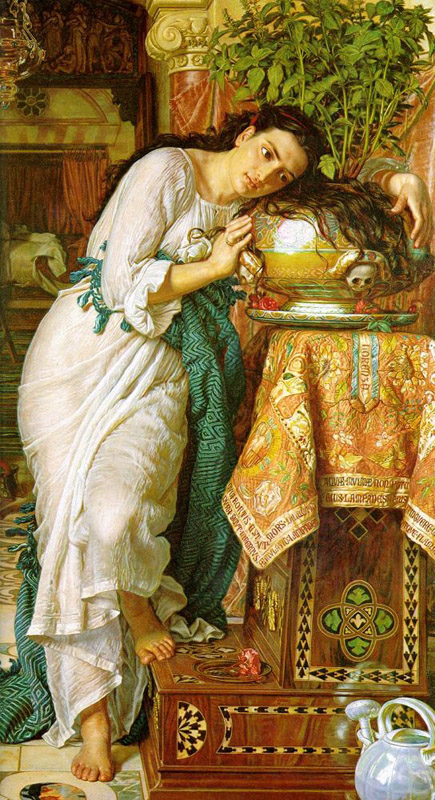
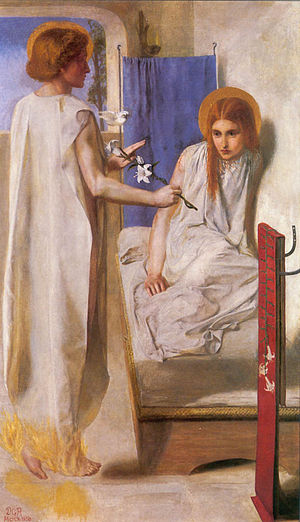
Pre-Raphaelite Goals
The Brotherhood’s early doctrines were expressed in four declarations:
- To have genuine ideas to express;
- To study Nature attentively, so as to know how to express them;
- To sympathize with what is direct and serious and heartfelt in previous art, to the exclusion of what is conventional and self-parodying and learned by rote;
- And, most indispensable of all, to produce thoroughly good pictures and statues.
Inspired by late Medieval and early Renaissance works, the Pre-Raphaelites created paintings that were vibrantly different than the art of their contemporaries. Their efforts to stay true to nature resulted in botanical details that were painstakingly reproduced and the doctrines they adhered to resulted in paintings with an almost photographic realism. They had their critics, however, and their work was not easily accepted. (Charles Dickens was a vocal critic. Later, though, he became good friends with Millais.)
The Pre-Raphaelites created art that is known for its vivd and colorful brilliance, achieved by painting white backgrounds that they would later paint over in thin layers of oil paint. Their work was meticulous and their subject matter drew inspiration from myths, legends, Shakespeare, Keats, and lovely long haired damsels that we now equate with Victorian beauty.
The Brotherhood itself did not last very long. The artists grew in different directions and their styles changed. For the most part, they stayed true to the principles that guided them in 1848, albeit in their own individual ways. The members of the Pre-Raphaelite Brotherhood and the artists they influenced had a profound effect on 19th and early 20th-century art. In fact, once you are familiar with them, you can easily spot their influence in popular culture today.
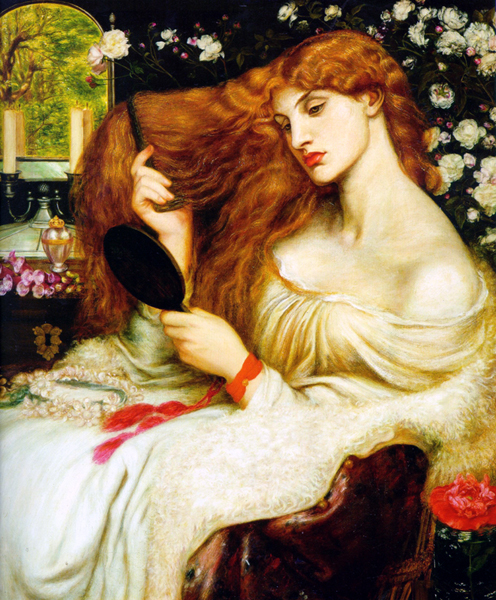
What about the women?
Though they were a brotherhood, there were many women in their circle that were crucial to the growth of Pre-Raphaelite art. These are the women that inspired the creation of this website. A diverse group of models, wives, family, friends, and lovers, the movement we now know as Pre-Raphaelitism is threaded with the repeated and vast contributions from these women. Several were artists themselves and most of them have familiar faces – they grace the canvasses painted by many of the brotherhood and their followers.
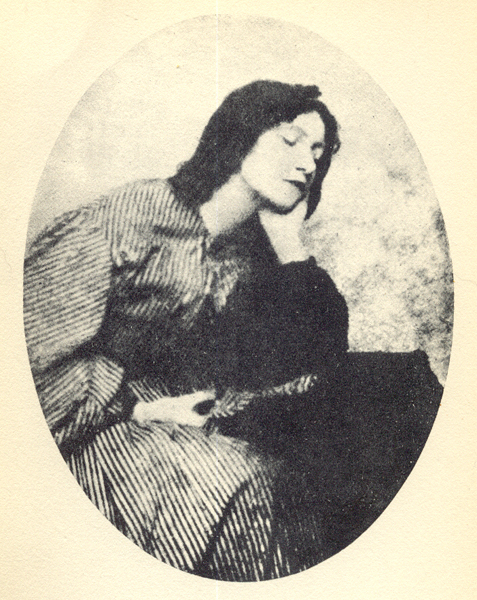
Photograph of artist Elizabeth Siddal. 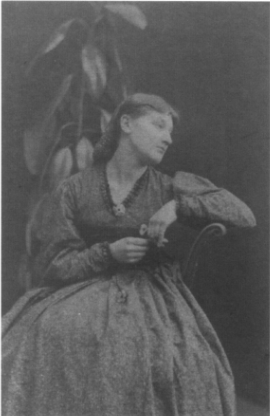
Photograph of Alexa Wilding by John Robert Parsons 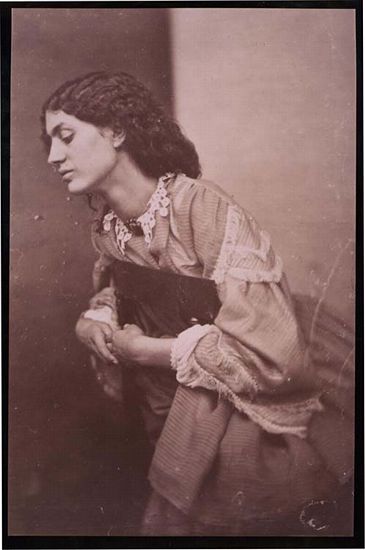
Jane Morris. Posed by Rossetti, photographed by John Robert Parsons
Why a site about Pre-Raphaelite women?
The women in the Pre-Raphaelite circle captivate me. Often painted as goddesses and muses while clad in flowing gowns the images of these women came to personify an age–an age that future generations would look upon with scorn.
In the past several decades there have been books, exhibitions, films, and television programs that indicate that the tide of derision toward them is turning.
Based on my involvement in social media I see exuberant, passionate lovers of Pre-Raphaelite art who are genuinely interested in sharing and learning more. Those Pre-Raphaelite enthusiasts have always been there, but the internet makes the gaps that separate us smaller.
The world wide web tears down walls, making artwork immediate and accessible. It is through that access that I have devoted seventeen years to sharing Pre-Raphaelite art in an attempt to connect with others who understand and see its beauty and relevance.
Thank you for being a part of this effort. I’m grateful you are here and honored to be a part of your search for Pre-Raphaelite Sisterhood.



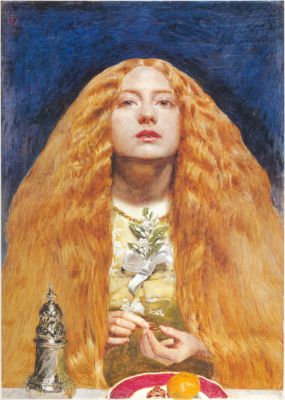
I find this website facinating! a summer project of mine this year is going to be based on the Pre-Raphaelites. I love their use of bold colour and elegant compositions, their intrests in the red headed women are a change to a vast Majority who will not only paint only a beautiful woman but an ordinary one at that.The Red Headed women that appear in the Pre-Raphalites (with the exception of Jane Morris) were ordinary but rare and very stunning; going by their portraits.
The groups title was also a revolt against the well known Raphael. Whom had been a corrupting tribute to the accademic teaching of art, or so thought by the Pre- Ralphaelites.
I’m inspired by your decision to highlight the lives of the women involved in the young mens lives, as everyone overlooks their existance almost completely when studying this genre of art. Infact in the majority of art the models are overlooked, for without them the paintings would surely cease to exist.
Sophie
Stephanie,
If those guys had you as a model, art would have had nowhere better to go!
Hi,
this website is so interesting! Especially as I am writing a novel about a few sitters for pre Raphaelite painters and sculptors. My main characters are Mary Lloyd (hardly known) and tho sisters known as Dorothy and Lena Dene (real names Ada Alica Pullen and Isabell Helena Pullen).
My novel is part fact and part fiction. It covers relationships between the women and the maen who painted them but especially between the women themselves. The fictional part is intertwined with autobiographic projections on topics, like gender, sexuality and emancipation on Mary and Lena.
It is written in Dutch but might very well be translated into English. A synopsis can be found here: http://woordenstorm.nl/dovl/synopsis/the-improbability-of-love/
Best,
Alice Anna
http://www.aliceverheij.com
Thank you! And I am very interested in your project. Good luck, I’d love to read it when you are finished.
My husband is directly related to the 2 wives of William Holman Hunt – Edith and Fanny Waugh. I am doing the family tree on Ancestry and found your website fascinating as I am trying to put meat on their bones and find their place in Victorian society. Any ideas?
Have you read ‘Pre-Raphaelites in Love’ by Gay Daly? There’s some interesting information in it regarding Hunt’s marriages. Thank you for commenting, I’m thrilled to ‘meet’ you!
You have omitted the fact that The PRB also drew inspiration from the Bible for many of their paintings with William Holman Hunt’s ‘Light of the World’ the most famous example based on Revelation 3 :20 ‘Behold, I stand at the door and knock……’ neither
myth or legend but truth. We are told that it’s message was so powerful that many people were converted to christianity as it was exhibited around the world.
This is a great introduction to this fascinating topic.
Readers may be interested to know that Rory Fellowes has written a new play (opening July 30 2013 at the Jermyn Street Theatre) about Sir William Blake Richmond, R.A., the profilic painter who created the mosaic decorations in the quire of St Paul’s Cathedral.
WBR’s father was the portraitist George Richmond, and WBR grew up personally knowing artists such as Millais, Rosetti, Hunt, and Leighton, whose work he revered. Rory Fellowes (whose brother Julian is the screenwriter and creator of “Downton Abbey”) re-examines the life and legacy of this 19th century virtuoso in this new one-man show.
Hi Stephanie,
I was just wondering where you got that list of 4 doctrines from? I am writing my dissertation at the moment and know of the list from Wikipedia (I am ashamed to admit) but cannot find the original source. I remember reading once that William Michael Rossetti might have listed them somewhere in a later work, perhaps an introduction to an anthology of letters of something, but don’t know which that would be, and haven’t found it anywhere so far. Unfortunately I think I would fail if I cited Wikipedia!
Thanks
Rose
Don’t worry, somehow miraculously I just picked up a book with it on its first page! (after weeks of searching, typical!) It was William Michael Rossetti, and it was written in 1895 (I think as part of the introduction of the Memoirs)
I was just about to answer your first comment! William Michael Rossetti, ed., Dante Gabriel Rossetti: His Family-Letters, with a Memoir, London 1895, vol. I
Ah amazing thank you! I hadn’t found it in that much detail!
Thank You
This is surely what websites are for – how refreshing to see the mutual help and informed discussion.
You have inspired so many people to dig deeper. The PRB.. have always fascinated me. I am enjoying the re-run of Desperate Romantics on BBC4 at present. Annie Miller has particularly interested me. She lived to be 90years of age dying in one of my favourite towns on the South Coast Shoreham by Sea. It was well worth Holman Hunt spending time and money ‘educating’ her- what a pity they did not marry.